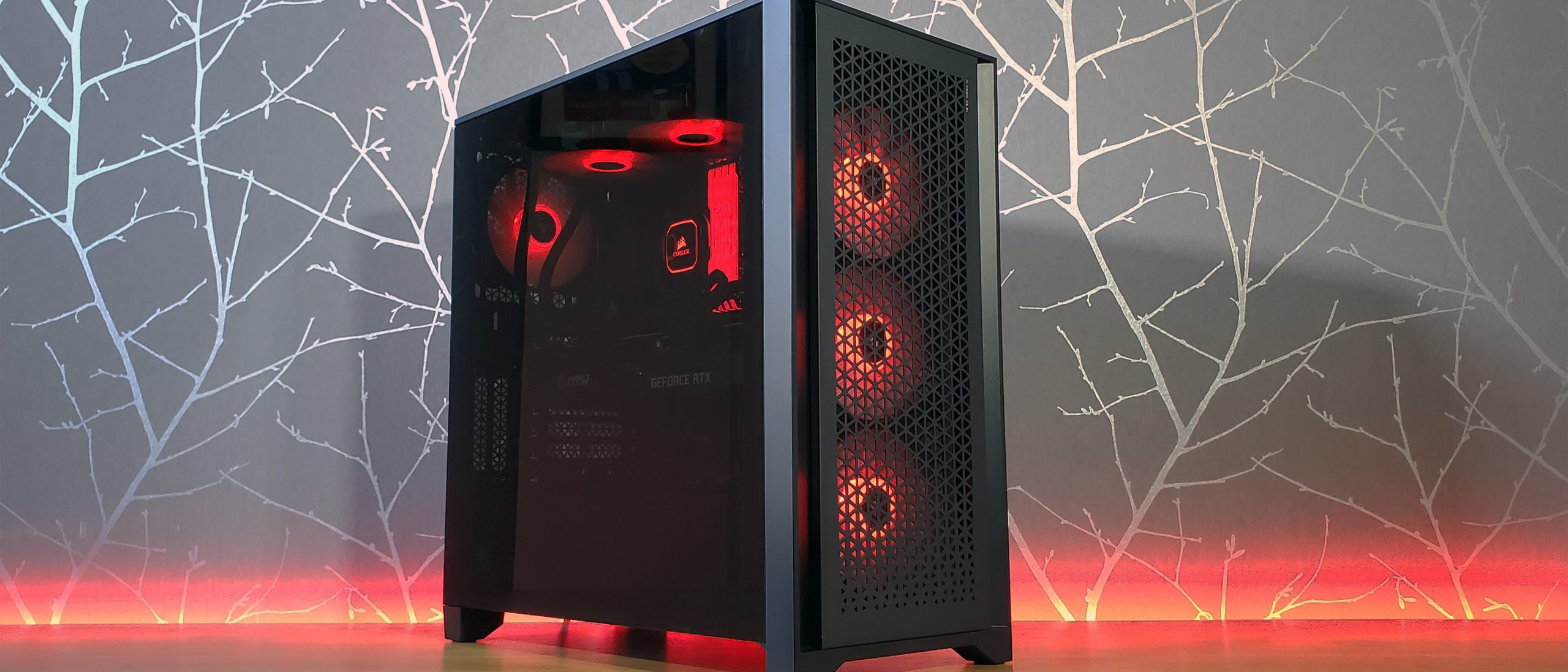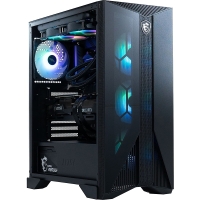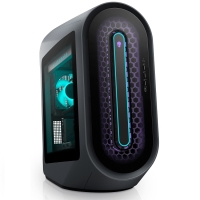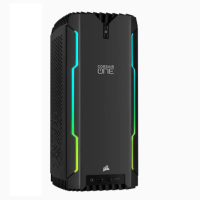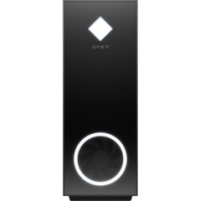
Best Gaming PCs of 2023
When you’re in the market for a gaming PC, there’s a lot to consider: power, size, components and what resolution you want to play at. If all you need is to play a few AAA titles at 1080p, you won’t need a high-end CPU and graphics card.
But if you want to play at 1440p or 4K, then you need to start thinking about saving more for your rig. CPU horsepower is also tied to gaming acumen, but branching out into anything much over a quad-core processor will primarily see performance gains in multi-threaded workloads such as video processing, rendering and encoding, not games.
Because component shortages have become less of a problem, you may now be able to get a prebuilt gaming PC with one of the best graphics cards for gaming without paying a hefty premium or having to wait weeks or months for you system to arrive.
It’s that time of year where new CPUs are starting to come out. AMD recently launched its Ryzen 7000 processors, including the Ryzen 9 7950X and Ryzen 5 7600X, which have proven to be their strongest gaming chips yet. Not to be outdone, Intel’s 13th Gen “Raptor Lake” chips, including the Core i9-13900K and Core i5-13600K came out even stronger.
On the graphics front, Nvidia recently announced its latest RTX 40-series cards, the RTX 4090 and RTX 4080 (16GB). Those will coexist with the current RTX 30-series, and presumably mid-range 40-series cards will come out sometime soon. Intel launched its Arc A770 and A750, providing power on the low-end and mid-range, and AMD’s 7900 XT and 7900 XTX are coming soon.
We’ll jump into our tested picks for best prebuilt gaming PCs directly below. But if you want more advice about how to shop and specific things to look for, our buying advice follows our top gaming PC picks.
Best Prebuilt Gaming PCs You Can Buy Today
Why you can trust Tom’s Hardware Our expert reviewers spend hours testing and comparing products and services so you can choose the best for you. Find out more about how we test.

The MSI Aegis RS 11th is a top-of-the line prebuilt gaming desktop. The 11th Gen Intel Core CPU and options for an RTX 3080 bring awesome gaming performance in a design that you can upgrade yourself down the line.
All of the parts are standardized, including the case. In fact, MSI makes the case, motherboard, CPU cooler, fans, GPU and power supply. This is the type of prebuilt desktop that you can upgrade, tinker with and make your own over the next several years.
If you don’t have a keyboard and mouse, the peripherals that MSI includes are decent enough to get started, though you’ll likely want to bump up the keyboard to something with mechanical switches eventually.
Read: MSI Aegis RS 11th review
Our suggested MSI Aegis RS config:

The Alienware Aurora R15’s biggest updates are all about cooling. Alienware parent Dell has added in a 240 mm radiator, finally moving on from a 120 mm cooler, which should allow for much better CPU performance. There is also more ventilation on the side, and this all made for a quieter PC to our ears.
It’s not much of a surprise that with an Intel Core i9-13900KF and an Nvidia GeForce RTX 4090, the Aurora plowed through our benchmarks measuring gaming and productivity performance.
On the one hand, we really like how many ports are accessible on the front of the Aurora, including three USB Type-A ports, a USB Type-C port and a 3.5 mm headphone jack. The downside is that Alienware is using a proprietary motherboard to achieve that, making it difficult to fully upgrade the system in the future.
The GPU, RAM and CPU are accessible on our model, and there’s room for additional storage. (Our review unit was maxed out, so there wouldn’t be much of a reason to make many changes outside of storage anytime soon).
Read: Alienware Aurora R15 Review
Our suggested Alienware Aurora config:

No intense lighting, no glass windows, just a small tower packed with gaming power. The iBuypower Revolt 3 has steel panels, black mesh and a largely subtle design. It’s clever, though, with two headset hangers and a built-in handle to carry it to your next LAN party.
At $2,599 as tested with an Intel Core i7-11700KF and an RTX 3080, it’s not listed at a crazy price considering today’s component shortage. And those components offer excellent performance in this tiny chassis.
Small form factor PCs can bring some oddities. This one has the motherboard I/O on the bottom of the case, so you have to lift it up to plug in or remove peripherals. Additionally, there is limited room in this case for when you want to make upgrades.
We also happen to like this case this system comes in on its own, if you’re looking to build your own PC.
Read: iBuypower Revolt 3 i7BG Review

In some ways, the Corsair One i300 is a console-like prebuilt PC. It takes up very little space on a desk with a 6.93 x 7.87-inch base that rises slightly taller than an Xbox Series X. But in that metal chassis is a set of top-end components, including an Intel Core i9-12900K, Nvidia GeForce RTX 3080 Ti, 64GB of DDR5 RAM and a 2TB PCIe Gen 4 NVMe SSD.
The design pulls in air through the sides and exhausts it out the top, and it’s not particularly loud. But that same petite form factor is what makes it difficult to upgrade. Sure, it’s possible, but you have very limited room to work with, and the sides don’t come off because the radiators are connected to them.
In order to get this top-tier, tiny system, you’ll have to pay a high price, however. We tested it at a wallet-busting $4,999, and the other configuration with Intel’s 12th Gen CPUs starts at $3,649.99. If that’s too much (and it is a lot of money!) you may want to consider some of the cheaper options on this list.
Read: Corsair One i300 Review
Our suggested Corsair One config:

The HP Omen 30L is a big-box gaming PC that feels like one you build. The latest design adds more airflow with an intake fan, plus sleek glass front and side panels and still has an easy-access panel to get to the most critical components. Oh, and of course the new intake fan has some sleek RGB to go with the new logo and the rest of the system.
The version we tested, with a 10th Gen Intel Core i9 and an RTX 3080 proved powerful in our gaming benchmarks and productivity tests. We do wish that HP had a more powerful CPU cooler, as the single 120 mm fan isn’t always enough for the Intel Core i9.
The addition of name-brand parts is also nice to see. There’s little, if anything, proprietary about the system, which includes a micro-ATX motherboard, WD Black SSD, Seagate HDD and a 750W power supply. That’s the special sauce that makes it feel a bit more like an enthusiast machine than some alternatives.
Read: HP Omen 30L Review
Our suggested HP Omen 30L config:
How to Choose a Gaming PC
- Bigger isn’t always better: You don’t need a huge tower to get a system with high-end components. Only buy a big desktop tower if you like the look of it and want lots of room to install future upgrades.
- Get an SSD if at all possible: This will make your computer far more faster than loading off of a traditional HDD, and has no moving parts. Look for at least a 256GB SSD boot drive, ideally paired with a larger secondary SSD or hard drive for storage.
- You can’t lose with Intel or AMD: As long as you opt for a current-generation chip, both companies offer comparable overall performance. Intel’s CPUs tend to perform a bit better when running games at lower resolutions (1080p and below), while AMD’s Ryzen processors often handle tasks like video editing better, thanks to their extra cores and threads.
- Don’t buy more RAM than you need: 8GB is OK in a pinch, but 16GB is ideal for most users. Serious game streamers and those doing high-end media creation working with large files will want more, but will have to pay a lot for options going as high as 64 or even 128GB.
- Don’t buy a multi-card gaming rig unless you have to: If you’re a serious gamer, get a system with the best-performing single graphics card you can afford. Many games don’t perform significantly better with two or more cards in Crossfire or SLI, and some perform worse, forcing you to disable an expensive piece of hardware to get the best experience possible. Because of these complications, you should only consider a multi-card desktop if you are after more performance than can be achieved with the best high-end consumer graphics card.
- The power supply is important: Does the PSU offer enough juice to cover the hardware inside? (In most cases, the answer is yes, but there are some exceptions, particularly if you intend to overclock a CPU.) Additionally, note if the PSU will offer enough power for future upgrades to GPUs and other components. Case size and expansion options vary drastically between our picks.
- Ports matter: Beyond the connections necessary to plug in your monitor(s), you’ll want plenty of USB ports for plugging in other peripherals and external storage. Front-facing ports are very handy for flash drives, card readers, and other frequently used devices. For added future-proofing, look for a system with USB 3.1 Gen 2 and USB-C ports.

Most pre-built gaming PCs, including those on our list of the best, come in multiple configurations. While we list the ones we reviewed, others may be better for you.
Graphics cards, including Nvidia’s RTX 4090, RTX 3090, RTX 3080, and RTX 3070 GPUs, have dropped in price and are easier to buy than they were months ago. That being said, supply chain issues mean you may still have to shop around a little bit to get what you want in your desktop.
For most people, budget plays the biggest role in a desktop buying decision. You can sometimes find good deals on big-box desktops when they go on sale, but you’ll be stuck with the components chosen by the likes of HP, Lenovo or Dell. The beauty of a custom-built PC is that you can adjust the component configuration until it suits your needs and budget. We are happy, though, to see more builds coming with standardized parts than ever before, so you can upgrade them later on.
Between Intel’s Raptor Lake CPUs, AMD’s Ryzen 7000 processsors and the latest GPUs from Nvidia, AMD and Intel, we should expect some refreshes in the coming months.
Discounts on the Best Gaming PCs
If you’re looking for a system that’s among our best gaming PCs or something similar, you may find savings by checking out the latest Newegg promo codes, Corsair coupon codes, Dell coupon codes, HP coupon codes, Lenovo coupon codes or Razer promo codes.
MORE: Best Gaming Laptops
MORE: Best PC Builds

